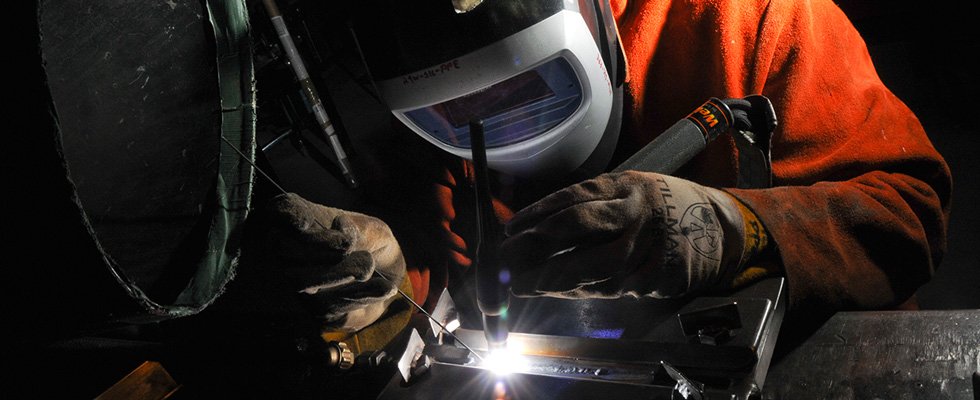
Welding is a process that joins materials together. It usually involves joining thermoplastics and metals by melting them together with high heat and then letting them cool, fusing them together.
Welding shouldn’t be confused with soldering and brazing as these techniques use much lower temperatures and don’t melt the parent (base) metal.
As well as melting the parent metal, there is usually a filler material added along the joint that, with the heat, forms a weld pool. This is a pool of molten material that forms the join when it cools. This means that the material and join are often stronger than the parent material.
Sometimes pressure is also used as well as heat. Pressure can even be used alone to produce the weld. When welding, there needs to be a type of shield that protects the melted or filler metals from oxidising or being contaminated.
There are lots of different sources of energy used when it comes to welding. You can weld with a gas flame – a chemical weld, an electric arc – an electrical weld, an electron beam, ultrasound, a laser, or friction.
Though welding is mainly an industrial practice, it is used in lots of different places such as under water and outer space as well as in the open air.
Given the high temperatures and fumes involved, welding is potentially dangerous and risky. Welders and their employers are required to put measures into place to avoid things like electric shock, burns, damage to vision, poisonous fume and gas inhalation, and exposure to intense UV radiation.





